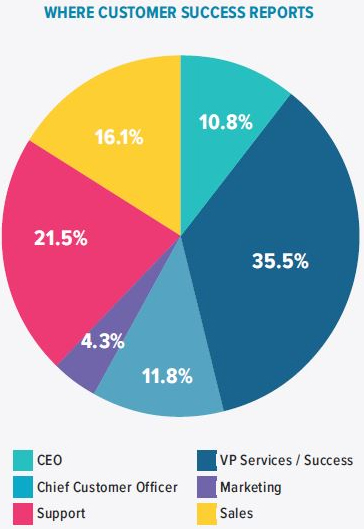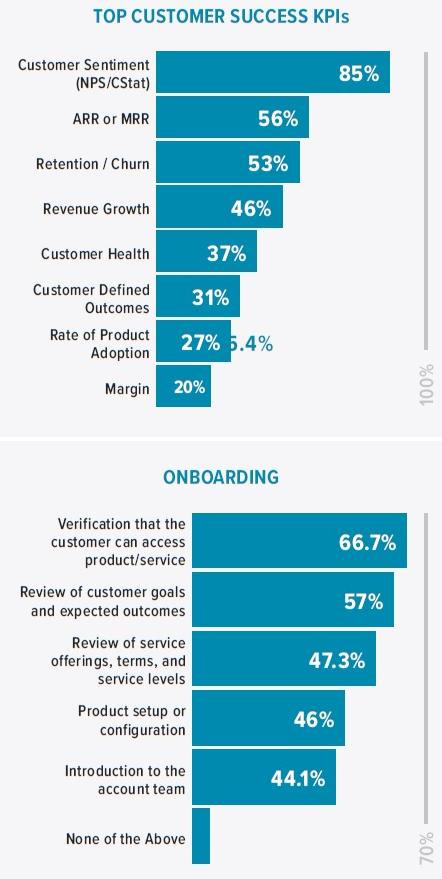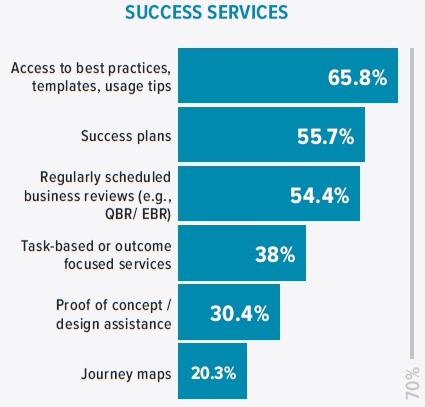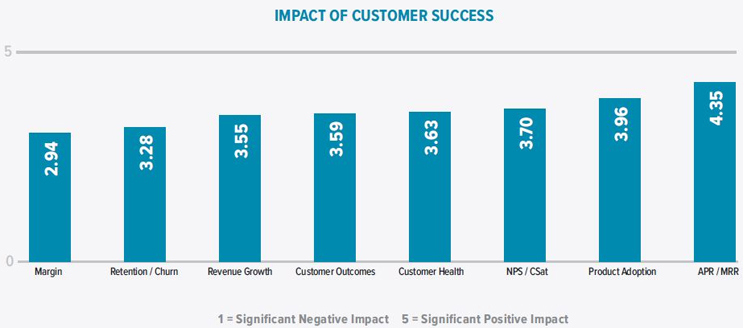The State Of Customer Success In Software
By Thomas J. Sweeny, ServiceXRG
This data-driven analysis of the customer success journey in the software world shows where we are now and where we are headed.
Customer success has become a widely used and universally accepted term to describe a variety of customer-focused activities. The term has many meanings: a department, a team, a role, a business strategy. Unfortunately, the broad use of the term has obscured the diverse and complex activities that underlie a potentially transformational initiative.
Customer success is not new. The general concept has been around for a while, but current practices suggest that something more profound is happening across the software industry. There is broad recognition that helping customers adopt and apply products successfully will help retain and build customer relationship value.
Companies based entirely on as-a-Service models have known for some time that landing new customers is just the beginning of the relationship. Companies that have evolved from the world of perpetual licenses have been slower to recognize that the imperative to retain and expand existing relationships applies to them too.
A BLUEPRINT FOR SUCCESS
Why wouldn’t every company want to embrace a model that retains and grows revenue from an existing base of customers while actively engaging new customers? At the heart of customer success are the practices companies use to:
- ENGAGE NEW CUSTOMERS
- HELP THEM ADOPT AND SUCCEED WITH THE PRODUCTS THEY PURCHASE
- RENEW AND EXPAND THE RELATIONSHIP
There are acronyms to describe the principles of customer success – LASER (Land Adopt Serve Expand Renew), CARE (Capture Adopt Retain Expand), LAER (Land Adopt Expand Renew), (ESG) Engage Serve Grow. Understanding the concept of customer success is not the inhibitor to implementation. For most companies, making the transition to a model that is fundamentally different from the way they operate today is.
There is no right or wrong way to apply the principles of customer success. Customer success can be an all-encompassing business strategy that affects every aspect of the customer relationship or applied more tactically to a single business process. The most important thing is to recognize that customer success is not a one-size-fits-all methodology and not every company can or needs to apply these practices in the same way.

As we come to the close of 2018 it is a good time to reflect on the state of customer success and examine the use and effectiveness of current customer success practices. I have extracted findings from a recent study of practices, resources, metrics, and outcomes associated with success initiatives.
Here, some top-level observations from the study:
- Customer success is not a one-size-fits-all methodology. It is a blueprint for how to engage, serve, retain, and expand customer relationships.
- Customer success may be applied tactically to focus on one aspect of customer relationships or strategically to transform all customer-facing practices.
- Customer success demands that companies embrace new measures of business success focused on the retention and expansion of relationship value.
- Customer success can be overwhelming and complex but does not need to be. Customer success can be applied effectively on specific focused activities (e.g., onboarding, adoption, renewal).
- Adoption of a few customer success tactics is not the same as a full-scale, end-to-end adoption of customer success principles.
- Full-scale implementation of customer success will transcend many traditional organizational silos — success requires removal of barriers between organizational silos and new levels of coordination and cooperation.
- Customer success is often started as a grass-roots initiative, but to reach its full potential it will require executive-level support.
- Customer success is a transformative process. It will take time to implement, but when done right can deliver results.

THE DRIVERS OF CUSTOMER SUCCESS OFFENSE VS. DEFENSE
To fully understand customer success today, we need to examine why companies pursue a success initiative. Customers are not the primary driver behind customer success even though they request capabilities such as account management, onboarding assistance, success planning, etc. Customer success is most often driven by internal business objectives.
The motivation for customer success falls in to two general categories: offensive and defensive. Companies that focus primarily on protecting existing relationships and recurring revenue streams are engaged in a defensive strategy while those looking to build and expand the value of current customer relationships are on the offensive.
Our research suggests that more companies use customer success defensively than offensively. This defensive versus offensive posture of course has a middle ground where companies view their customers success initiatives as a means to both protect and expand the value of customer relationships.
THE CUSTOMER SUCCESS ORGANIZATION
TACTICAL OR STRATEGIC
More than half of companies associate their customer success initiative with a team or department. The remainder describe customer success as a cross-departmental initiative. Cross-departmental suggests that there are expectations for cooperation and coordination between customer facing groups but does not imply a wholesale consolidation into a single unified department. More than half of companies organize customers success within a support or services department. Customer success is also found within sales and marketing organizations. Slightly more than 22 percent of companies indicate that their customer success intuitive reports directly to a CEO or chief customer officer.

There is no right or wrong answer about where customer success should report. For focused, tactical implementations, customer success can operate effectively within a single organization. If, however, customer success is intended to affect many or all aspects of the customer relationship from initial sale to renewal, customer success must have cross-functional participation with executive support.
MEASURING THE IMPACT OF CUSTOMER SUCCESS
KEY PERFORMANCE INDICATORS (KPIs)
Primary customer success metrics are strategic with an emphasis on the health and value of customer relationships. Customer success has heightened awareness of profoundly important measurements that have a direct and tangible relationship to overall business performance. While not all departments involved in success-focused activities are measured by the same performance indicators, there is greater awareness of the impact of success activities on retaining and growing relationship value.

Companies that view customer success as a defensive tool are most likely to measure performance based on customer churn and retention rates as well protection of recurring revenue. Those on offense look to growth and expansion of relationship value.

Overall the top customer success KPIs include:
- CUSTOMER SENTIMENT AS MEASURED BY CUSTOMER SATISFACTION OR NPS
- RECURRING REVENUE RETENTION (ARR/MRR)
- CUSTOMER CHURN (RETENTION)
- THE GROWTH OF CUSTOMER RELATIONSHIP VALUE
Attainment of customer defined outcomes and product adoption rates are among the lesser used KPIs. Margin performance falls at the bottom of the list suggesting that customer success efforts individually are not typically viewed through a profit and loss lens.
CUSTOMER SUCCESS ACTIVITIES
Customer success initiatives that are aligned within service delivery organizations are more likely to include success activities such as onboarding and adoption but less likely to include sales activities to upsell and cross sell. Success initiatives that are companywide provide onboarding and adoption activities but place greater emphasis on selling and expanding relationship value.
Success activities are most often delivered by success or account teams versus individuals. Initial engagement for new customers is high-touch with over three-quarters of companies indicating that new customers are welcomed by a personal phone call.
To help customers apply and use products, success offers include access to templates and best practices as well as concerted efforts to help customers define and plan for success.
THE IMPACT FROM CUSTOMER SUCCESS
Companies report positive or significant positive results from their customer success initiatives with the greatest positive impact focused on recurring revenue rates and product adoption. Customer success is reported to have the least impact on customer churn (retention) and margin. The marginal impact on churn suggests that there are retention issues beyond the scope of what customer success can address (e.g., product performance and quality).
Companies with effective customer success initiatives may find that changes to product quality, features, and performance are required to maximize customer success performance. The logical extension of customer success will move from traditional customer-facing organizations to include that product teams that design, develop, and test new products.
THOMAS J. SWEENY is the founder and principal of ServiceXRG. He leads research initiatives and publishes extensively about service industry trends and best practices. He helps companies develop and execute service strategies to strengthen customer relationships and optimize financial performance.
